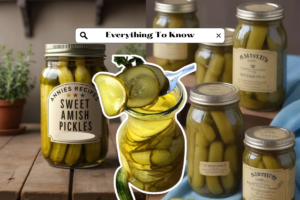How to Start a Successful blog
- Living

- Written byYour Local It Girl
- |02/05/2024
Welcome to the dynamic world of blogging, where creativity meets strategy and passion transforms into a thriving online presence.
If you’re embarking on the journey to start a successful blog in 2024, you’re in the right place. Before you delve into the exciting details of domain names, content creation, and monetization strategies, let’s lay a strong foundation together.
Blogging is not just about expressing thoughts; it’s a strategic venture that requires understanding key elements such as SEO, social media marketing, and effective networking. Join us as we navigate through the essential steps, from conceptualization to analytics, to help you create a blog that not only stands out but flourishes in the ever-evolving digital landscape.
1. Understanding Blogs: Functions and Key Elements
If you’re aiming for a successful blog in 2024, conducting thorough research before diving into domain names and other details is crucial. Many individuals make the significant mistake of not understanding the basics of blogging.
Blogging is essentially a business, and treating it as such is essential. You can’t just create random blog content and expect it to rank. Instead, blogging requires a strategic approach, and it’s crucial to grasp the entire process before writing any content or purchasing your domain.
So what exactly do you do when learning how to set up a blog?
Canva planners are like your study buddies that look good too. With Canva, you can create visually appealing study schedules. Pick colors that vibe with you, add some cool icons, and make it your own. When your study plan looks good, you might find yourself more excited to stick to it.
Now, Notion is like the Swiss Army knife of productivity. It’s not just pretty; it’s super functional. You can make to-do lists, calendars, and even databases for your study materials. Everything in one place, and you can access it from anywhere – your laptop, phone, or even from the coffee shop.
Time blocking is your golden ticket. Allocate specific time slots for different subjects or tasks. Like, 9-10 AM for Math, 1-2 PM for English, and so on. This way, you’re not staring at the clock, wondering where the day went.
Let your planner be your personal assistant. Set reminders for assignment due dates or exams. Notion can even send you notifications. No more last-minute cramming because you forgot about that history paper!
2. Write your Content
Now that you know the basics of how blogs function, it’s time to dive into creating content for your blog. This way, once your website is up and running, you won’t need to stress about making content and can concentrate on designing.
3. Designing Your Blog: Tips Before You Start
Before diving into creating your blog and setting up your domain and WordPress, it’s essential to envision how you want your blog to look. I suggest visiting blogs that catch your eye and using them as inspiration. However, be careful not to copy someone else entirely. It’s a good idea to create a mockup using user-friendly tools like Figma or Canva if you’re not tech-savvy
4. Essential Pages for Your Blog
In order to fast-track the growth of your blog within a few months, establishing key pages is crucial. These pages not only provide essential information about your blog but also play a pivotal role in attracting ad servers, sponsorships, and affiliate programs. By having these pages readily available, visitors can easily understand what your blog is about without the need for repetitive inquiries.
The must-have pages for your blog are:
- Terms of Service
- About Us
- Contact Us
- FAQ
5. Choosing My Blogging Platform
For my blog, I went with WordPress.com through Namecheap. It was a more budget-friendly option compared to other hosting websites. I bought my domain name for $7.16, and the one-year hosting cost me $11.76.
6. Setting Up Your Monetization Strategy
This step is crucial, as it lays the foundation for monetization right from the start, allowing you to maximize your blog earnings. Understand the affiliate programs you want to work with, choose your ad-serving platform, and decide on the products you’ll create.
For effective monetization, prioritize your own products. Readers are more likely to purchase items you’ve created. The same applies to affiliate marketing. As for ads, it’s advisable to wait until your blog attracts a few thousand visitors before incorporating them.
Remember, focusing on your own products and strategic affiliate marketing can significantly boost your blog’s earning potential.
7. Setting Up Analytics for Your Blog and Social Media
After establishing your blog and social media accounts, tracking your audience becomes crucial. Understanding which social media platform is most effective, identifying popular blog posts, and getting insights into your audiece demographics are key aspects. For analytics, utilizing tools like Google Analytics and Search Console is essential.
Google Analytics offers valuable information such as:
Now, let’s delve into the details of what you can gain from Google Analytics and why it’s beneficial for your blog and social media strategy.
- Website traffic: Google Analytics tracks the number of visitors to your site, including new and returning users.
- Audience Demographics: It provides information about the demographics of your audience, such as age, gender, location, and interests.
- User Behavior: You can analyze how users interact with your website, including which pages they visit, how long they stay on each page, and the paths they take through your site.
- Traffic Sources: Google Analytics shows where your website’s traffic is coming from, whether it’s from search engines, social media, direct visits, or referral sites.
- Conversion Tracking: It allows you to set up goals and track conversions, such as completed purchases, sign-ups, or other desired actions on your site.
- E-commerce Tracking: For online businesses, Google Analytics provides detailed information about e-commerce transactions, including revenue, products sold, and more.
- Site Speed: It measures how quickly your pages load, providing insights into the user experience.
- Custom Reports: Users can create custom reports and dashboards to focus on specific metrics and key performance indicators (KPIs) relevant to their business goals.
- Real-Time Data: Google Analytics offers real-time data, allowing you to see current user activity on your site.
- Mobile Analytics: It provides information about the devices and operating systems used by your visitors, helping you optimize for different platforms.
- Event Tracking: You can set up and track specific events on your site, such as clicks on buttons, video views, or downloads.
The Google search console, on the other hand, provides you with:
- Search Performance: It offers data on how often your site appears in Google Search results, the average position, and the click-through rate (CTR) for various queries.
- Index Coverage: This section provides information about how well Google is able to crawl and index your site. It highlights issues such as crawl errors, indexation status, and mobile usability.
- Sitemaps: You can submit XML sitemaps to help Google understand the structure of your site and improve its crawl efficiency.
- Mobile Usability: The Google Search Console alerts you to any mobile usability issues on your site, ensuring a better experience for users on mobile devices.
- The URL Inspection Tool enables you to inspect how Google indexes a specific URL on your site, providing details on crawl issues, indexation status, and more.
- Performance Reports: You can analyze the performance of your site over time, including metrics like clicks, impressions, average position, and CTR.
- Security Issues: The Google Search Console alerts you to any security issues on your site, such as malware infections or other potential threats.
- Structured Data: It helps you validate and troubleshoot structured data markup (schema.org) on your pages, which can enhance the appearance of your site in search results.
- Rich Results: The Search Console provides insights into how your pages may appear as rich results, such as rich snippets, in Google Search.
- Manual Actions: If Google detects any manual actions taken against your site (e.g., for violating Google’s quality guidelines), it will notify you in the Search Console.
- Links: You can view information about the external links pointing to your site, which can be useful for understanding your site’s backlink profile
9. Crafting a Content Calendar for Blogging Success
So, let’s talk about why gradually increasing the time you spend studying can actually make a big difference. Think of it like training for a marathon. You wouldn’t start by running 26 miles right away, would you?
Nope, you’d start small and build up over time. Same idea with studying. If you try to cram in a ton of hours all at once, your brain might start feeling like mush, and that’s no good.
When you gradually increase your study time, it’s like giving your brain a chance to get used to the workload. It’s kind of like stretching before a workout – you’re warming up your brain muscles. Plus, it helps you build up stamina.
You wouldn’t expect to lift super heavy weights without working your way up, right? Your brain’s the same way. Start with smaller study sessions, then add a bit more time as you get more comfortable.
9. Crafting a Content Calendar for Blogging Success
In the vast world of blogging, building connections with other bloggers can significantly boost your reach and engagement. Here are simple yet effective ways to network with your peers:
1. Link Building:
- Share the love by including links to other bloggers’ relevant articles in your own posts.
- Reach out and ask if they would be interested in linking to your content.
- Building this mutual link support can enhance your blog’s visibility in search engines.
2. Commenting on Blogs:
- Engage with fellow bloggers by leaving thoughtful comments on their posts.
- Share your insights or ask questions related to the content.
- Genuine comments not only establish your presence but also encourage reciprocation.
3. Collaboration on Projects:
- Explore opportunities to collaborate on projects or guest posts with other bloggers.
- Joint projects can attract a wider audience and bring diverse perspectives to your blog.
- Ensure clear communication and shared goals for a successful collaboration.
4. Social Media Platforms:
- Connect on social media platforms like Twitter, Instagram, or LinkedIn.
- Share each other’s content, tag one another, and engage in conversations.
- Social media is a powerful tool for expanding your network and reaching new audiences.
Conclusion
Congratulations on reaching the end of this comprehensive guide to starting a successful blog in 2024.
Armed with insights into SEO, social media marketing, content creation, and strategic networking, you are now well-equipped to embark on your blogging journey.
Remember, your blog is not just a platform for your ideas; it’s a dynamic business that evolves with your dedication and strategic approach. As you set up your blog, design its look, and establish essential pages, keep in mind the long-term goals.
Crafting a content calendar and utilizing analytics will be your roadmap to success. Now, go ahead, unleash your creativity, and watch your blog flourish in the digital realm. Happy blogging!
Follow Me
Related Posts
FOLLOW @YOURLOCALITGIRL
ELSEWHERE
0.2k
11k
Subscribers
0.2k
FOLLOW @YOURLOCALITGIRL
ELSEWHERE
0.2k
11k
Subscribers










